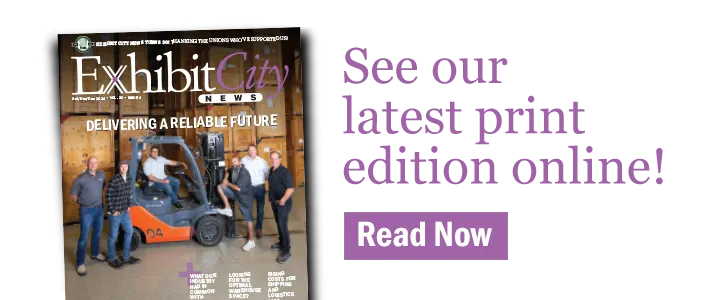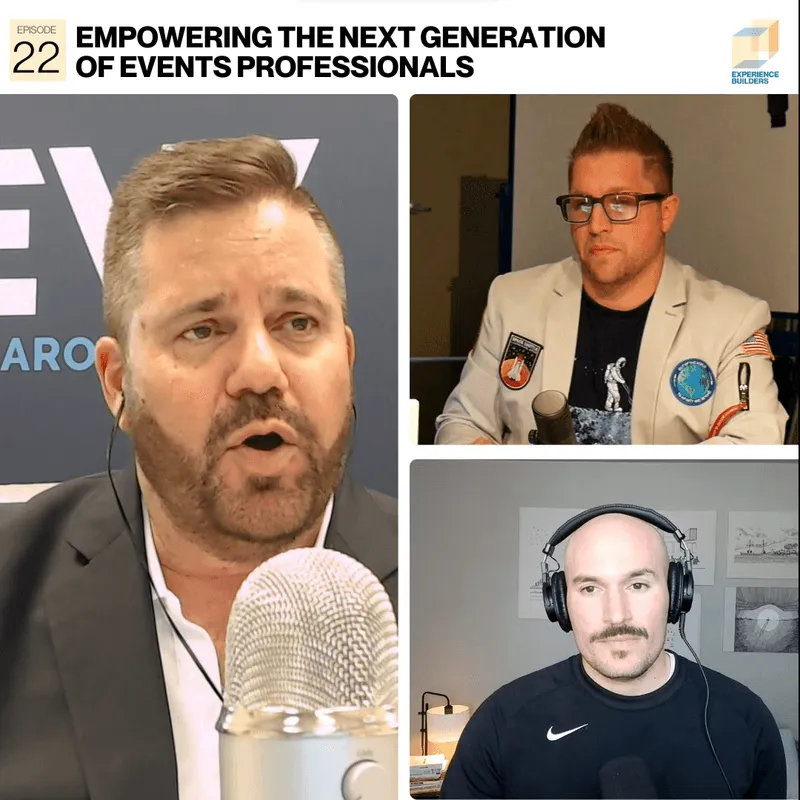by Ray Smith
As long as people pray to live another day, the healthcare industry will expand and thrive, and medical tradeshows will continue to provide the best avenue for introducing the latest drugs and technology that can prolong the inevitable.
Medical equipment manufacturers and pharmaceutical companies realize that exhibiting at medical tradeshows presents opportunities for meeting face to face, sharing ideas and displaying products. They’re targeting a captive audience, one that’s engaged in learning about innovations in their field of specialty.
It’s Not Brain Surgery
It’s not brain surgery, by any means, but designing display booths for medical tradeshows can be a little more complicated than designing for conventional consumer and industry tradeshows.
You need a magnifying glass to read the fine print on a bottle of Tylenol, but the FDA requires labeling to be easily read at eye level on the exhibit floor. If a medical device is on the market, it can only be displayed and marketed for approved uses. Medical devices must have 510(k) clearance and be approved by the FDA.
Pharmaceutical Exhibits are Typically More Complex
“Pharmaceutical exhibits are typically more complex than exhibits for other industries,” affirms Dana Esposito, executive vice president of strategy for Worcester, Massachusetts-based BlueHive Exhibits. “Pharmaceutical company tradeshow managers are aware of their unique needs, and they seek tradeshow companies that are fluent in the challenges in their world.”
“Kit rules,” which lay out regulations and restrictions on designing and building exhibit booths, are a different animal for medical expos.
Exhibitor kit rules cover just about everything: booth heights, length and line-of-sight; floor coverings; liability insurance; on-premises consumption of alcohol and nicotine; install and dismantle policies; staffing; and display guidelines on signage and banners.
Strict Setbacks
Every medical show has its own rules, and they tend to have strict setbacks and see-through regulations, says Dawn Marie Raczka, EVP of business development for BlueHive. “FDA walks the show floor in the exhibit hall to be sure product information sheets are being placed out, and all content, especially black box drugs, are being properly labeled with the ISI, or Important Safety Information,” she says.
Jon Ellms, EVP of client development for Access TCA, says he believes the rules are designed to level the playing field among exhibitors. They include restrictions on exhibit height and blocking the view of adjacent exhibits, rules that are not specific to medical shows.
The Challenge for Medical Exhibits
“Most shows have a version of these rules, though they vary in specifics from show to show, so when we design and build an exhibit that will be used at multiple meetings, we have to anticipate these things so we’re not doing costly retrofits over and over,” says Ellms, who’s also vice president of Healthcare Convention and Exhibitors Association. “There are many more rules, but those are the ones that relate most to exhibits.”
The challenge for medical exhibits comes from strict separation of commercial and medical areas, places where exhibitors can talk about approved products, but only in the context of their approved use, and where they can talk about research and development, and unapproved use of approved products. For example, an oncologist may suggest a drug approved for breast cancer to a patient with lung cancer.
Regulations often require a solid wall separating parts of the exhibit booth, and that wall puts them at odds with the association’s insistence on open, barrier-free exhibits, Ellms says.
“I look at this as managing opposing forces,” he says, “and while it can be vexing, it creates a great opportunity for companies like ours to show consultative value to our clients, and a way to differentiate ourselves from traditional exhibit builders.”
TIGHT ON GIVEAWAYS
Freebies are tight. Maybe a pen. The Centers for Medicare and Medicaid Services regulates anything given away by exhibitors with a value of more than $12.69 or a total exceeding $126.89 for each individual health care provider, Raczka notes. Otherwise, exhibitors must report the transaction on the CMS website, in accordance with a law known as The Sunshine Act, shedding “light” on financial relationships between doctors, hospitals and drug companies.
“Most pharmaceutical companies opt out of any larger value due to the number of manhours it takes to provide all the necessary backups,” Raczka says. “Also, most doctors do not like to give out their NPI (National Provider Identifier), which is also required.”
Ellms contends that rules about gifts to physicians and mandatory reporting of those gifts have “torpedoed” lavish spending on parties and have effectively wiped out giveaway items such as pens, mugs and other tangible gifts or prizes, unless it can be used by the physicians’ patients. “Companies like ours have gotten much better about building educational activities that have some show appeal without involving any kind of giveaway or gift,” he says.
DESIGN REGULATIONS
Every pharmaceutical company has a corporate regulatory and compliance team that has a unique set of rules to interpret for exhibit design, Raczka states. Regulatory reviews require extensive documentation and preparation by the content agency, product team, exhibit manager and exhibit builder. The process can take up to nine months for show site approvals.
There’s a lot more to tackle when it comes to designing healthcare exhibits, Ellms declares. At CES, companies are there to sell to other companies, retailers and consumers. At pharmaceutical shows, exhibitors are generally there to get facetime with physicians, educate them and move them along a relationship continuum.
“Exhibitors use these shows to build advocacy and relationships with influential physicians who can, in turn, help influence other physicians,” the tradeshow executive says. “The physicians aren’t actually paying for the product – insurance companies or the government does that – but they are influencers, so the whole purpose of pharma shows is to influence and educate.”
Exhibits emphasize educational opportunities, case studies and testimonials, and areas for presentations. Medical devices follow this same approach, but they also tend to sell on the show floor, meaning lots of demonstration counters, and more exhibit staff, Ellms notes.
ADVERTISING SCRUTINY
Healthcare companies are heavily regulated, and their advertising messages are closely scrutinized. Ad campaigns go through multiple rounds of formal review, lengthening timelines for developing exhibits.
Even the simplest, most obvious advertising slogan could go through three rounds of compliance review, adding a week to the timeline for simple graphics, Ellms estimates, and more realistically, up to four weeks for complex graphics.
“Add to that the extra time it takes to produce graphics once they are approved because of all the supply chain difficulties, and it’s not uncommon to have to lock down graphic content six to eight weeks before a show,” he says. “That fact has pushed a lot of exhibitors to move to digital screens versus printed graphics. While it doesn’t shorten the design or review time, it’s much faster to copy a digital file to a computer than it is to print a large format graphic.”
Balancing legality with creativity is what makes designing healthcare exhibits different, Ellms explains. “Creatively compliant … for some designers, it’s a drag, too confining. I look at it as a challenge and a way to stand out.”
Content agencies and exhibit builders work in tandem to provide all of the graphics, content, and structure assets. Raczka says turn-around time for annotations can be just a few hours, which means the exhibit house has to work within a small window of time for edits. “It truly takes a skilled pharmaceutical team to see an exhibit ready for show site from beginning to end with only the greatest of success,” she says.
DESIGN VARIABLES
A tradeshow environment has a wider range of variables to consider such as two-dimensional elements of print and media that exist within a three-dimensional space, and at larger scale than traditional print and media, adds Patrick Haggerty, senior exhibit designer for BlueHive.
“These variables are most familiar to the exhibit designer and exhibit house,” he says. “A skilled exhibit house takes a qualified PharmD into the client meetings from their regulatory team. In turn they can make recommendations that will be accepted when presented.”
A proactive approach by the exhibit designer and the compliance and regulatory team often prevents breaking foundational guidelines in exhibit design, Haggerty continues. Length of copy, column width, point size and viewable location must be “fair balance text,” stretched beyond what an exhibit designer would normally produce, he says, but it’s all required by regulations.
The client has brand guidelines and tells BlueHive exactly how to use them, and how not to use them, Esposito adds. “This is the font we use for our logo. This is the font for our tagline. We have three exact colors. This is how we use it for our brochure. This is how we use it for our business card.”
There’s No Real Difference
For companies that provide I&D labor, audio-visual rentals, catering and other exhibit services, there’s no real difference in how they’re engaged at healthcare shows compared with other shows, Ellms clarifies. They must all show proof of insurance, acquire necessary permits, and agree to abide by the rules.
Most healthcare companies won’t consider hiring an exhibit designer that doesn’t bring depth and experience to the job. They’re left out in the cold, Ellms says. Access TCA selects suppliers with past relationships, who have “proven their mettle at healthcare shows,” and they end up with a disproportionate amount of the work, he says.
“The other force at play—the people who hire us—marketing, usually, tend to stay in healthcare. Consequently, much of our business comes from referrals,” Ellms continues. “It can be tough to get into healthcare clients, but if you deliver, specializing has its advantages because your work becomes so visible in a relatively small field of suppliers. Of course, if you fail, it can be devastating for exactly the same reason.”
HCEA is a nonprofit organization
HCEA is a nonprofit organization that advocates for the value of the convention medium in healthcare, serving corporate exhibitors, medical associations, and industry suppliers. Educational programs focused on the latest medical technology and methods comprise an attractive component of these shows.
































